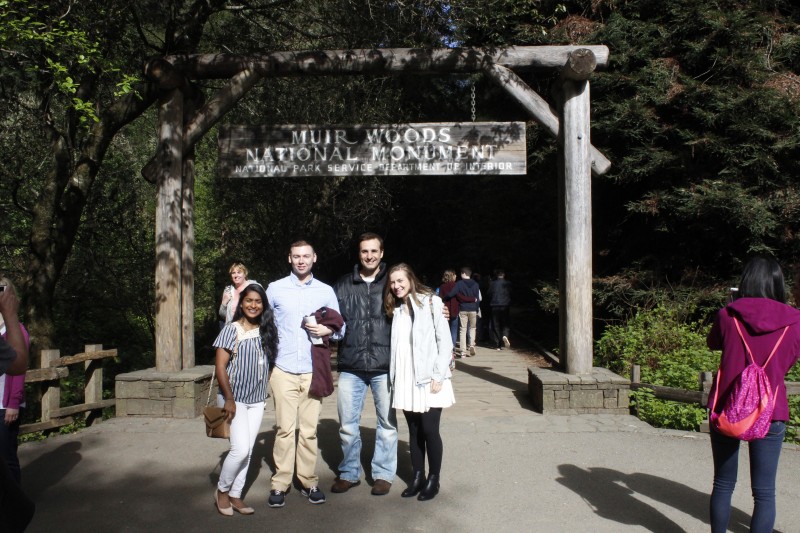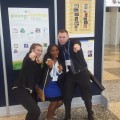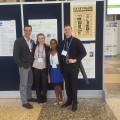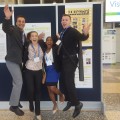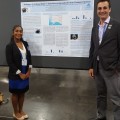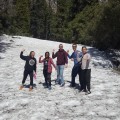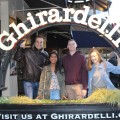NSU Newsroom
SharkBytes
Horizons
This version of NSU News has been archived as of February 28, 2019. To search through archived articles, visit nova.edu/search. To access the new version of NSU News, visit news.nova.edu.
This version of SharkBytes has been archived as of February 28, 2019. To search through archived articles, visit nova.edu/search. To access the new version of SharkBytes, visit sharkbytes.nova.edu.
Halmos College Students Present Research at American Chemical Society National Meeting
Three undergraduate students from NSU’s Halmos College of Natural Sciences and Oceanography presented their research findings at the 253rd American Chemical Society (ACS) National Meeting and Exposition held in April 2017, in San Francisco, California.
Presenting at the meeting were Chitra Gotluru (senior, biology major, chemistry minor), Elizabeth Rinaldi (senior, biology major, chemistry minor), and Jake Bence (junior, chemistry major).
The students were mentored by faculty members Beatrix Aukszi, Ph.D., associate professor of Chemistry, Dimitrios Giarikos, Ph.D., professor of Chemistry, and Amy C. Hirons, Ph.D., associate professor of Marine Biology at the college.
The students will also showcase their work at NSU as poster and oral presentations at the 2017 Undergraduate Student Symposium. (here)
Students worked on these projects for over a year. “Research projects have ups and downs but these students persevered. We are so proud of them! We’ve gotten to know these students very well over the years, so while at the conference we also had some fun going to Muir woods, as well Yosemite!” Giarikos said.
I’m positive that their involvement in these independent research projects will benefit them in the long run. Students develop critical thinking skills while working in the lab, and attending the conference allowed them to polish their presentation style as well.” Aukszi said.
Hirons added “The students learned a suite of valuable skills beyond laboratory techniques and calculations, particularly how to collaborate. All three students worked not just independently but in conjunction with fellow undergraduate and graduate students and their professors on these projects. Expertise in this area will benefit them greatly in their future professions.”
The ACS conference was a great opportunity for me to learn more about the world of chemistry research and what exciting projects are currently going on. Being able to participate in that and present the research I have done was fun and rewarding.” Jake Bence said.
Elizabeth Rinadli said “I greatly enjoyed my opportunity to attend the ACS Conference, as it allowed me to share my research with knowledgeable professionals and students. I also enjoyed gaining insight in other areas of chemistry through the research of fellow undergraduate and graduate students and professors.”
“Being able to vocalize and share my research with a greater science community has been an extremely satisfying experience. It has allowed me to further appreciate my research, and has increased my motivation to continue my work.” Chitra Gotluru said.
The students attended the national meeting with financial support from NSU’s PanSGA (Student Government Association), NSU’s President’s Faculty Research and Development Grant, and additional aid from an ACS travel grant and a SOFLACS Travel award.
The presentations included:
- “Assessment of Heavy Metals in Subsistence-Harvested Alaskan Pinniped Vibrissae” Chitra Gotluru
- “Guided inquiry of “student friendly” coupling methods for 2,2-bipyridines as precursors for Ru-complexes” Elizabeth Rinaldi
- “Synthesis and Characterization of Tris(4,4-dichloro-2,2-bipyridine) Ruthenium (II)” Jake Bence
